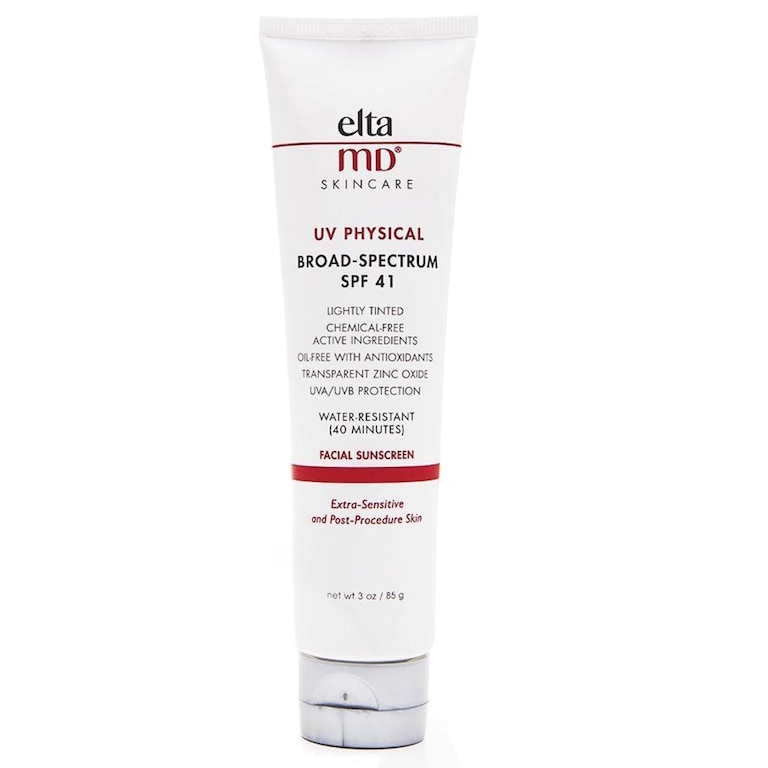Discoloration is a common skin complaint, but many are unaware that there are different types. Post-inflammatory hyperpigmentation, or dark spots that linger after a blemish or wound has healed, is one. Sunspots caused by UV exposure is another. But perhaps the most frustrating type of discoloration is melasma—and you might not even know you have it.
What is melasma?
According to Haute Beauty Skin Expert Dr. Julie Russak of Russak Dermatology Clinic, “Melasma appears as dark patches on the cheeks, forehead, and above the upper lip. Far more common in women, melasma is related to hormone exposure. Hormones make cells in our skin that produce pigment, called melanocytes, become very sensitive not only to UV radiation, but also to IR radiation, heat and many other factors that can increase inflammation in the skin. The good news is that once recognized, there are many ways to control melasma and to prevent it from flaring (because unfortunately once you have it, you always have it).” The good news: Melasma is more of a cosmetic issue than a health concern.
What causes melasma?
Dermatologists and researchers have yet to uncover the root cause of melasma (although there seems to be a genetic component), but several triggers have been identified. “Certainly the main trigger for melasma is sun exposure since UV rays stimulate the pigment-producing cells within the skin,” explains Dr. Amanda Doyle of Russak Dermatology Clinic. There’s also a link between hormones and melasma. “Many women experience melasma while pregnant, and this is called chloasma, or the ‘mask of pregnancy.’ Oral contraceptives and hormone replacement therapy can bring on or worsen melasma as well,” Dr. Doyle adds. Other triggers may include heat, pollution and stress, as well as inflammation caused by skin irritation and other external factors.
Melasma treatment options
“Melasma can be caused by internal factors like genetics and hormonal changes, and external factors like heat, sun and visible light exposure. UV rays, infrared rays (IR-A), and even high-energy visible light (the light emitted from phones and computer screens) increase melanin production, which can trigger new areas of discoloration or worsen existing areas of excess pigmentation,” says Haute Beauty Skin Expert Dr. Georges Kaado. That’s why the first line of defense when dealing with melasma is sunscreen—but applying once in the morning is not enough to protect the skin all day. For optimal improvement when treating melasma, it’s essential to reapply at least every two hours when spending time outdoors (and even when you’re sitting in front of a computer.
It’s essential to use a broad-spectrum sunscreen, which means the product protects against UVA and UVB rays. Research has shown that tinted sunscreens formulated with iron oxide may provide additional protection against blue light. Most dermatologists recommend using physical filters such as zinc oxide and titanium dioxide, and at least an SPF of 30 on a daily basis. Product to try: EltaMD UV Physical Broad-Spectrum SPF 41
 Photo Credit: EltaMD
Photo Credit: EltaMD
At-home melasma treatment
In addition to diligent daily sunscreen use, the proper skincare routine can help fade melasma and help prevent it from returning. Thorough cleansing (especially at night) helps clear the skin of ultra-fine pollution particles that may exacerbate melasma, and an effective moisturizer can replenish the skin’s barrier to promote overall skin health. According to Haute Beauty Skin Expert Dr. Karyn Grossman, “Your morning skincare routine is crucial. Use potent antioxidants such as vitamin C and phloretin to decrease free-radical damage and melanin production. A great new ingredient called tranexamic acid is now also available topically. It has been used in Asia orally to help treat melasma and now is available in skincare products.” Product to try: SkinCeuticals Discoloration Defense
 Photo Credit: SkinCeuticals
Photo Credit: SkinCeuticals
Professional and prescription-based melasma treatments
More persistent or severe melasma may require medical intervention, and dermatologists have a variety of options. “Prescription-based topicals are an important component of successful melasma treatment. Hydroquinone, retinoids, azelaic acid, tranexamic acid, kojic acid and steroids are the most common topical ingredients dermatologists turn to—and they are often used in combination for optimal results,” Haute Beauty Skin Expert Dr. Bobby Awadalla says. Oral tranexamic acid has been shown to provide improvement in melasma as well.
Dermatologists often recommend office-based treatments like chemical peels and laser therapy to help improve the appearance of melasma. “Chemical peels can help exfoliate discolored cells and lasers like Sciton’s Halo can help break up excess pigment within the skin. However, it’s especially important to find a dermatologist with experience treating your skin tone, as improper use of these treatments can make discoloration worse especially in skin of color,” Dr. Awadalla warns.
“Perhaps the most frustrating aspect of melasma is that successful treatment results only last as long as a patient avoids the triggers,” says Dr. Awadalla. But with this said, finding the melasma prevention and treatment approach that works for your skin (and sticking to it) can help keep fade discoloration and keep it at bay.
For more information, visit Dr. Brian A. Levine's social media:

























